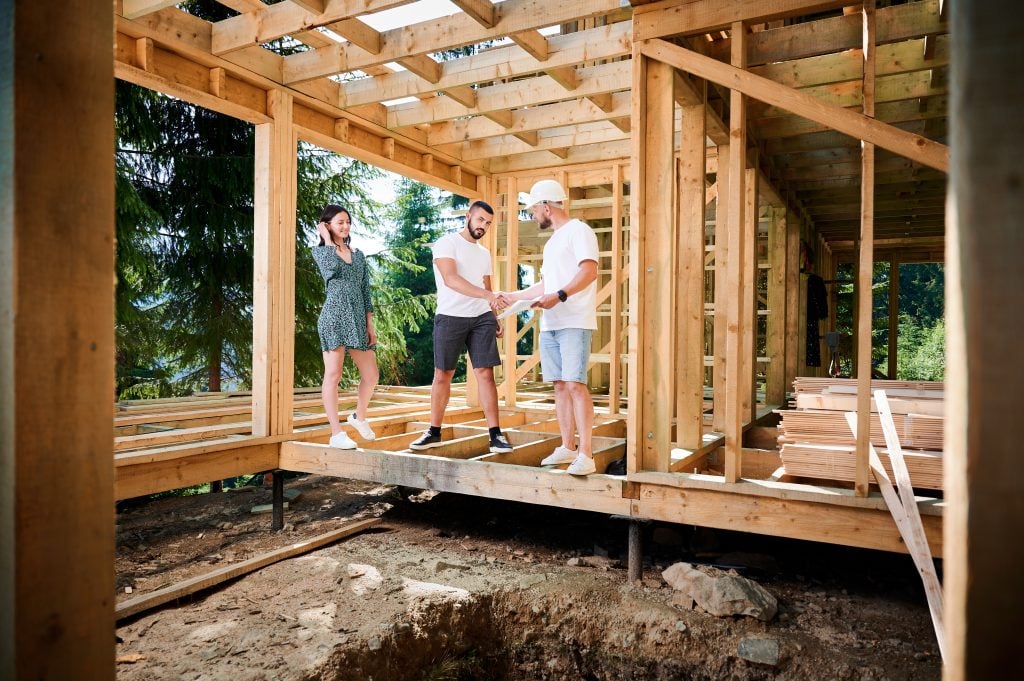

Thinking about a home extension but dreading the planning permission process? Here’s some potentially exciting news! In February 2024, the UK government explored changes to Permitted Development Rules (PDRs) for homeowners. This means certain extensions and renovations could be built without needing a full planning application. Let’s explore what these proposed PDR changes might mean for you and your home improvement plans.
Are you looking for ways to maximize your living space without the hassle of dealing with slow local authorities?
The Central Government is proposing significant changes to the Town and Country Planning (General Permitted Development) (England) Order 2015. These changes could be the solution you’re looking for.
So, what’s the purpose and benefits of the proposed changes?
These new permitted development rules aim to provide homeowners and businesses with more flexibility to extend and improve their properties.
They simplify the approval process and allow for more extensive development activities.
These changes seek to support the gentle densification of towns and cities, improve living spaces for growing families, and address the inefficiencies of local planning authorities.
Moreover, in this article, we will explore the proposed changes in detail. We’ll explain how they can benefit you as a homeowner or business owner and what specific developments will be permitted under the new rules.
Let’s dive in and see how these changes can make your home improvement projects easier and more efficient.
What Is The Purpose and Benefits of the Proposed Changes?

To start, let’s talk about why these changes are happening and how they can help you as a homeowner or business owner.
Flexibility for Householders and Businesses
The main goal of these changes is to give homeowners and businesses more freedom to develop their properties.
Here’s how it works:
For Home Improvements
Homeowners will be able to do bigger home improvements without needing to get full planning permission.
This means you can build larger extensions, convert your loft, and add wrap-around extensions more easily.
Currently, wrap-around extensions are not allowed under permitted development rules, but the new rules will change that.
Imagine being able to create a spacious, open-plan living area that connects your kitchen, dining, and living spaces seamlessly.
For Business Expansions
Businesses will also find it easier to expand their buildings both upwards and outwards.
This flexibility can help businesses grow without getting stuck in long approval processes. For example, a shop could add an extra floor for more retail space or storage.
A small office could extend outwards to create more workspace for employees. These changes can help businesses adapt quickly to changing market conditions and customer needs.
Support for Urban Densification
Another big reason for these changes is to make cities more compact and lively. Here’s how they will achieve this:
- With Upward Extensions
It’ll be simpler for property owners to add more floors to their buildings. This can help create more homes without needing extra land, which is often hard to find in cities.
Adding extra floors can increase the housing supply and make better use of existing buildings. For example, a two-story building could become a three or four-story building, providing more living space for more people.
- Using Space Efficiently
Encouraging upward extensions can help cities make better use of the space they already have. This can ease the shortage of homes and make cities more vibrant and exciting places to live.
Efficient use of space can lead to more affordable housing options and reduce the pressure to develop new land. It also means that cities can grow without spreading out too much, preserving green spaces and reducing urban sprawl.
Improvement of Living Spaces

For families looking to expand their living spaces, these changes have a lot to offer. Here’s what you can expect:
- First-Floor Extensions
You can add more rooms or living areas by extending upwards, making room for your growing family.
This is especially useful for families who need more bedrooms or an extra living area but don’t want to move to a new house.
First-floor extensions can provide the extra space needed without taking up garden space.
- Loft Conversions
Converting your loft will be easier under the new rules, especially if you’ve already made other extensions to your home.
Loft conversions can create additional bedrooms, home offices, or playrooms, making better use of the space under your roof.
The new rules will make it simpler to get approval for these conversions, saving you time and money.
- Wrap-Around Extensions
Instead of just extending at the back or the side, you’ll be able to do both. This will give you more space to live in and make your home more practical.
Wrap-around extensions can create a larger, more flexible living area that suits modern family life. They can also enhance the value of your property by adding more usable space.
- Raising Roof Ridges
By allowing roof ridges to be raised, we can improve loft spaces, making them warmer and more comfortable to live in.
Raising the roof ridge by up to 300mm can provide better insulation and head height, turning a previously unused attic into a livable room.
This can be particularly beneficial in older homes where the attic space is limited.
What Are The Challenges Addressed by the Changes?
- Inefficiencies in Local Authorities
The proposed changes aim to address several inefficiencies often seen in local authorities. These inefficiencies show up in various ways:
- Delays in Processing Applications
Many local authorities, such as St Albans Council, are slow in processing planning applications. This delay can happen due to understaffing, bureaucratic red tape, or outdated procedures.
- High Administrative Burden
The current planning permission process involves a lot of paperwork and administrative tasks. This can overwhelm local council offices, causing backlogs and delays.
- Inconsistent Decision-Making
Different local authorities interpret planning rules differently. This leads to inconsistent decisions and unpredictability for applicants.
The proposed changes to the Town and Country Planning (General Permitted Development rules) (England) Order 2015 aim to fix these inefficiencies.
Here’s how:
- Standardized Regulations
The changes offer clearer, more standardized regulations. This reduces varied interpretations, ensuring a more consistent approach across different local authorities.
- Automatic Approvals for Certain Developments
Some changes include automatic approval for certain types of development. This bypasses the need for time-consuming manual reviews.
- Reduced Paperwork
Simplifying the required documentation for permitted developments can significantly cut down the administrative burden on local authorities. This allows them to focus on more complex applications.
- Low Target Compliance
Another issue the proposed changes aim to tackle is the low compliance rate with development targets set for local councils. Here are the specific challenges:
Failure to Meet Housing Targets
Many councils struggle to meet the housing development targets set by the government. This is often due to the cumbersome planning permission process, which deters developers and homeowners from pursuing projects.
Impact on Housing Supply
The slow approval process creates a bottleneck in housing supply. This worsens housing shortages, especially in high-demand urban areas.
The proposed changes are designed to improve compliance with development targets by:
- Facilitating Development Projects
By making it easier and quicker for homeowners and developers to get approvals, the changes can stimulate more development activity.
- Encouraging Upward Extensions
Allowing for upward extensions without full planning permission can help increase the housing supply within existing urban areas. This makes better use of available space.
- Supporting Local Authority Performance
Simplified and streamlined processes can help local authorities meet their targets more effectively. They can process more applications within the same timeframe.
Detailed Proposed Changes to Address Challenges
- First-Floor Extensions
- Current Limitation: Homeowners are restricted to ground floor extensions without full planning permission.
- Proposed Change: Allowing first-floor extensions will enable homeowners to add more living space vertically, alleviating pressure on the ground footprint.
- Benefit: This change supports the densification of housing in urban areas, helping to meet housing demand more effectively.
- Loft Improvements
- Current Limitation: Existing regulations on loft conversions are often restrictive, particularly regarding volume limits and structural changes.
- Proposed Change: Simplifying loft conversion rules will make it easier for homeowners to utilize attic spaces.
- Benefit: More practical and accessible loft conversions can add valuable living space without expanding the home’s footprint, contributing to better housing solutions.
- Wrap-Around Extensions
- Current Limitation: Homeowners can only extend to the rear or side under current permitted development rules, not both in a continuous extension.
- Proposed Change: Inclusion of wrap-around extensions in permitted development rights.
- Benefit: This allows for more cohesive and functional living spaces, encouraging more comprehensive home improvement projects.
- Further Extensions
- Current Limitation: Homeowners are limited in how they can combine different types of permitted extensions.
- Proposed Change: Allowing larger rear extensions to be combined with other permitted developments rules.
- Benefit: This provides greater flexibility for homeowners, enabling more substantial and integrated home improvements.
- Raising Ridges
- Current Limitation: No provision for raising roof ridges under current permitted development rights.
- Proposed Change: Permitting the raising of roof ridges by up to 300mm.
- Benefit: This change can improve the functionality of loft spaces by providing better insulation and headroom, making these spaces more livable.
Positive Outcomes for Homeowners
The proposed changes offer a range of positive outcomes for homeowners, making home improvement projects more accessible and cost-effective:
- Ease of Development
Simplified regulations mean homeowners can undertake development projects without lengthy and costly planning applications.
- Cost Efficiency
By maximizing the use of existing property, homeowners can avoid the expense and hassle of moving to a larger home.
- Enhanced Living Conditions
Improved and expanded living spaces can significantly enhance the quality of life for families, providing more room and comfort.
Conclusion
The proposed changes to permitted development rights offer significant benefits for homeowners and businesses, providing more freedom and flexibility in making property improvements.
These changes can lead to enhanced living conditions and more efficient use of existing housing stock. Homeowners are encouraged to review the full consultation document for detailed guidelines and diagrams.
Further Reading
For detailed information and diagrams, you can read the full consultation document on the UK government’s website: Changes to various permitted development rights consultation.
FREE EXPERT HELP TODAY
Thinking of your dream home improvement or how to start your project?
Need your planning questions answered? Talk to an expert today.
Book a FREE 20 Minute Call with one of our home improvement Architects.

